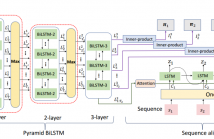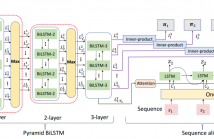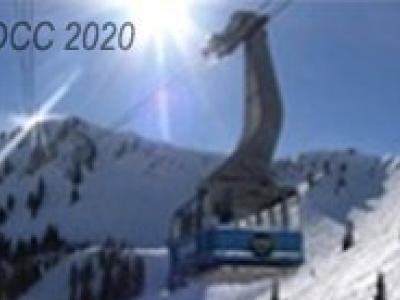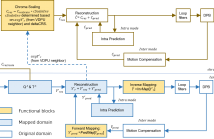- Image/Video Storage, Retrieval
- Image/Video Processing
- Image/Video Coding
- Image Scanning, Display, and Printing
- Image Formation
- Read more about COMPLEX PAIRWISE ACTIVITY ANALYSIS VIA INSTANCE LEVEL EVOLUTION REASONING
- Log in to post comments
Video activity analysis systems are often trained on large datasets. Activities and events in the real-world do not occur in isolation, instead, they occur as interactions between related objects. This work introduces a novel method that jointly exploits relational information between pairs of objects and temporal dynamics of each object. The proposed method effectively leverages a new simple architecture that is flexible and easily trained to detect relational activities and events using small datasets (hundreds of samples).
- Categories:
 26 Views
26 Views
- Read more about Key Action And Joint CTC-Attention Based Sign Language Recognition
- Log in to post comments
Sign Language Recognition (SLR) translates sign language video into natural language. In practice, sign language video, owning a large number of redundant frames, is necessary to be selected the essential. However, unlike common video that describes actions, sign language video is characterized as continuous and dense action sequence, which is difficult to capture key actions corresponding to meaningful sentence. In this paper, we propose to hierarchically search key actions by a pyramid BiLSTM.
- Categories:
 59 Views
59 Views
- Read more about Key Action And Joint CTC-Attention Based Sign Language Recognition
- Log in to post comments
Sign Language Recognition (SLR) translates sign language video into natural language. In practice, sign language video, owning a large number of redundant frames, is necessary to be selected the essential. However, unlike common video that describes actions, sign language video is characterized as continuous and dense action sequence, which is difficult to capture key actions corresponding to meaningful sentence. In this paper, we propose to hierarchically search key actions by a pyramid BiLSTM.
- Categories:
 99 Views
99 Views
- Read more about Efficient Storage of Images onto DNA Using Vector Quantization
- Log in to post comments
The archiving of digital data is becoming very challenging as conventional electronic devices wear out in time leaving at stake any data that has been stored in them. Therefore, data migration is necessary every 5-10 years. A great percentage of this stored data is "cold", which means that it is very rarely accessed but needs to be safely stored into back-up drives for security and compliance reasons. Unfortunately, the maintenance and replacement of back-up tape drives in big data centers is very expensive both in terms of money and energy.
- Categories:
 82 Views
82 Views
- Read more about MODEL-INDEPENDENT RATE CONTROL FOR INTRA-CODING BASED ON PIECEWISE LINEAR APPROXIMATIONS
- 1 comment
- Log in to post comments
- Categories:
 30 Views
30 Views
video can be found at here:
https://drive.google.com/file/d/1taJnhOmYtOVfBFPNkwAsIXg_itYW5Xn1/view?u...
- Categories:
 94 Views
94 Views
- Read more about Linear Model based Geometry Coding for Lidar Acquired Point Clouds
- Log in to post comments
- Categories:
 71 Views
71 Views
- Read more about Spectral Video Compression Using Convolutional Sparse Coding
- Log in to post comments
- Categories:
 26 Views
26 Views
This paper describes a new video coding tool in the Versatile Video Coding standard (VVC) named as luma mapping with chroma scaling (LMCS). Experimental compression performance results for LMCS and non-normative examples for deriving LMCS parameter values are also provided. LMCS has two main components: 1) a process for mapping input luma code values to a new set of code values for use inside the coding loop; and 2) a luma-dependent process for scaling chroma residue values.
- Categories:
 507 Views
507 Views
- Read more about Segmentation of Text-Lines and Words from JPEG Compressed Printed Text Documents Using DCT Coefficients
- Log in to post comments
Segmenting a document image into text-lines and words finds applications in many research areas of DIA(Document Image Analysis) such as OCR, Word Spotting, and document retrieval. However, carrying out segmentation operation directly in the compressed document images is still an unexplored and challenging research area. Since JPEG is most widely accepted compression algorithm, this research paper attempts to segment a JPEG compressed printed text document image into text-lines and words, without fully decompressing the image.
dccv.pdf
- Categories:
 59 Views
59 Views